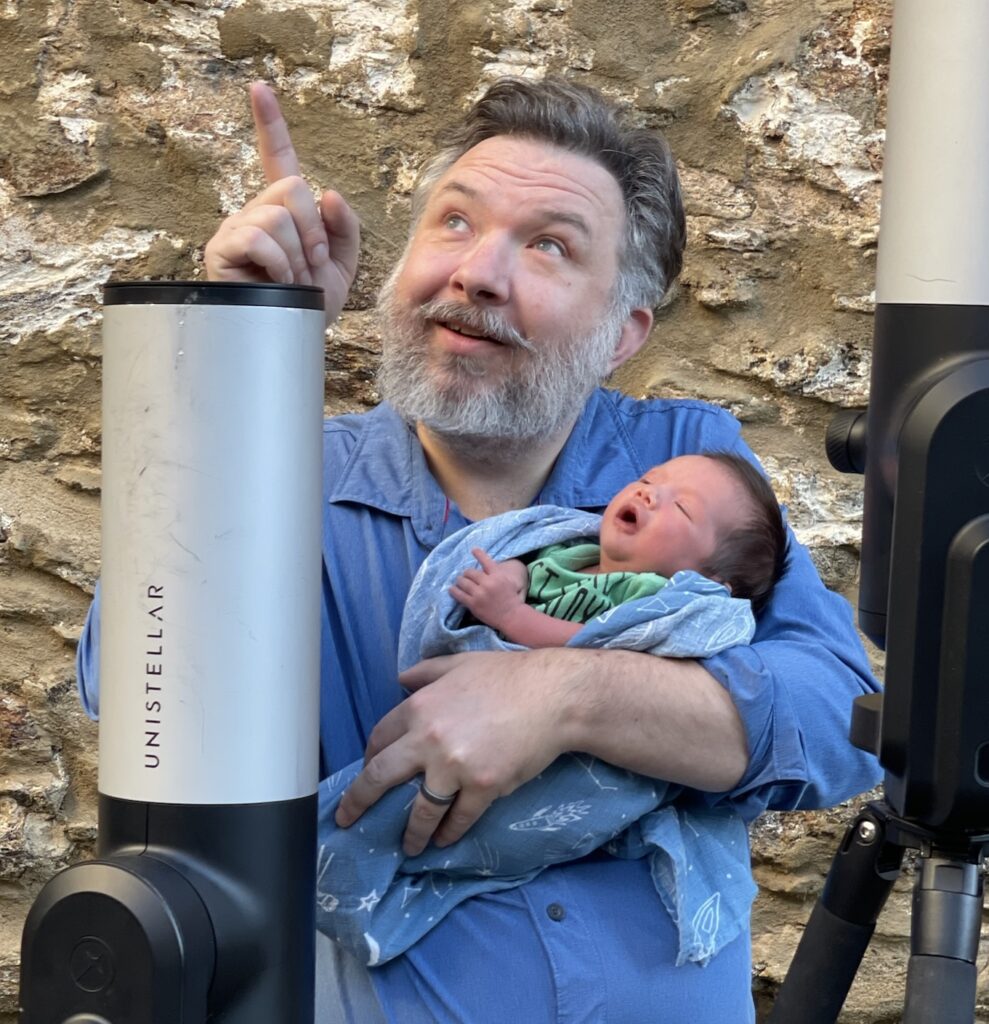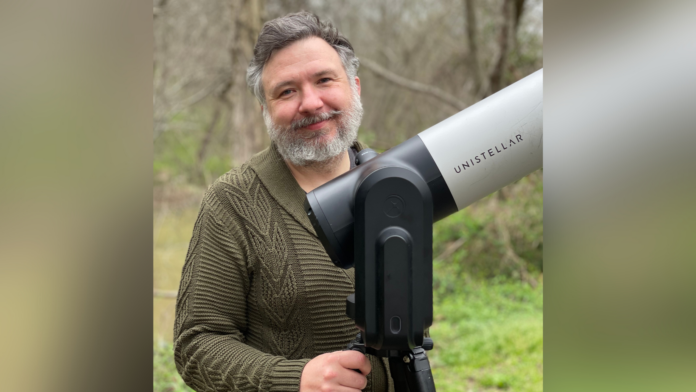A Mercer University professor was part of a team of citizen scientists who contributed data for a first-of-its-kind NASA mission. Dr. Justus Randolph, a quantitative research methodologist in the Georgia Baptist College of Nursing, was one of 31 amateur astronomers from across the world who gathered information before, during and after NASA’s Double Asteroid Redirection Test (DART).
According to NASA, the mission marked “humanity’s first time purposely changing the motion of a celestial object and the first full-scale demonstration of asteroid deflection technology.” Traveling at 15,000 mph, a spacecraft made impact with asteroid Dimorphos as it was orbiting parent asteroid Didymos, which successfully shifted Dimorphos’ path.
On March 1, the citizen scientists published preliminary findings of their work in a study titled “Light Curves and Colors of the Ejecta from Dimorphos after the DART Impact.”
“Put simply, you could call it a trial run for Armageddon,” Dr. Randolph said. “It was a good test to see the degree to which an artificial satellite could deflect an asteroid. If there’s a near-Earth asteroid that’s a potential killer, we could use this information from the DART mission to design a satellite to make an intervention that could push off the asteroid. It truly was a planetary defense mission.”
The citizen scientists involved in the project are part of the global Unistellar Network, a community of more than 10,000 people who own Unistellar eVscope telescopes. Members can choose to provide data and observations for a variety of astronomy projects, including missions related to comets, supernovas, exoplanets and planetary missions.
“There are over 10,000 potential users. That’s like having 10,000 eyes in the sky,” Dr. Randolph said. “Even if it’s cloudy in one place, somebody is going to be looking at it. The big telescopes don’t always have the resources to look at what we need. By having this network, we did more than any one person or observatory could do alone.”

Dr. Randolph, whose interest in astronomy goes back to childhood, has been an active member of the Unistellar Network for a couple years now. He mainly conducts data analysis of exoplanets — planets beyond our solar system — but does data collection for other projects as well.
“(Astronomy) gives me a reverence for life and the universe. It’s a good disposition to have to feel so small. It puts things in perspective for me,” he said. “I bought (the Unistellar telescope) because of the pretty pictures, but it’s the science that keeps me coming back as a weekly or a couple-times-a-week user.”
About six months before the DART impact on Sept. 26, 2022, Dr. Randolph and other citizen scientists started doing initial telescope observations from their locations to create a baseline of data. Then, they provided observations throughout the day of impact and watched the event unfold via livestream, and they collected additional data afterward to assess how the asteroid’s orbit was altered.
“Because our network is so big, we had several people be able to actually observe the moment of impact,” said Dr. Randolph, who wasn’t able to see the impact from Georgia but provided a series of longitudinal measurements of the asteroid pair. “There was a countdown to the impact. It was a real global community celebrating the event. It was more meaningful because I had been doing the science around it.”
All the data from the Unistellar Network members was collected and uploaded, and NASA used it to analyze the mission and later confirm its success.
“The most important thing is we have some basic knowledge and proof of concept that we can use an artificial satellite to deflect an asteroid,” Dr. Randolph said.
He said being involved in this NASA mission and the Unistellar Network has been extremely meaningful to him.
“It gives me a way to pursue science outside of my career. It gives me a way to connect with a community of other people that share the same passion that I do. I developed friends all over the world through this,” he said.










